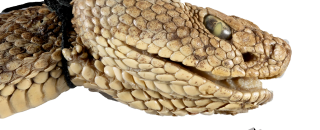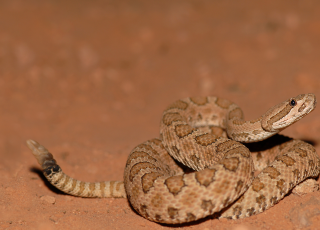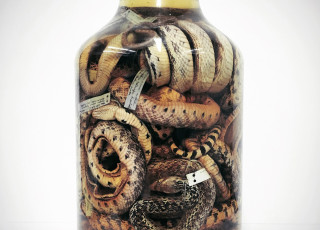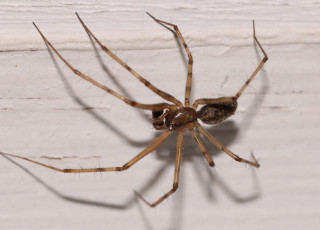A nomination for Utah’s Most Important Snake
By Drew Dittmer
How important can one rattlesnake be? This is the first of two posts making a case for Utah’s most important snake
How many rattlesnakes are there?
Like most children I peppered the adults around me with endless questions. Mostly the classics: why is the sky blue, what is money, what’s that smell, etc. My father probably received the bulk of these interrogations, and at some point he would typically deliver the following response:
- How many grunts in a hog?
- How many barks in a dog?
- Why is milk white and butter yellow?
- And if you really use your head,
- How many crumbs in a loaf of bread?
This usually left me pretty confused, which put a stop to my questioning. Of course this was the result my father was seeking.
Clearly I never forgot that poem. I am certain my father is not the original author, and I have no idea what the poem’s origins are. Regardless, at the time, I was unaware of how central the fundamental question of “how many” would become to my own career. That career is herpetology and wildlife biology. That is to say, I am a wildlife biologist who specializes in reptiles and amphibians. Biologists are scientists, and scientists ask and attempt to answer questions. While there are many different focal areas of study, “how many animals are there” is one of the more important questions that wildlife biologists are concerned with. Sometimes and with some species of animals this number is actually possible to know or estimate with some level of accuracy. Though more often this number cannot be known.
Lately I have been pondering a pretty daunting question: how many rattlesnakes live in Utah? Honestly the best answer I can offer is, I’ve no idea. Although that does not mean I can’t try to answer or grossly estimate an answer. Some of the following answers are my own attempts at sarcastic estimation:
- “Too many!!” says anyone suffering from ophidiophobia.
- A whole lot, but less than there used to be?
- Fewer than there are grains of sand, but more than the total number of Patagonia brand puffy jackets being worn on a brisk Utah day?
Naturally, the real answer is that not only do I not know how many rattlesnakes are in Utah, but I feel confident claiming that no one else does either. But, perhaps it is easier to answer the question, how many species of rattlesnakes are there in Utah? Certainly this answer must be known? Unfortunately I am going to make the unsatisfying argument that the answer is both yes, and no.
So, let us start with the “yes” part of the unsatisfactory answer. Rattlesnakes are classified into two genera, Crotalus and Sistrurus, and all of the rattlesnake species native to Utah are in the genus Crotalus. So, for those of you keeping track, that is just one genus of rattlesnake in Utah. Spoiler alert, “one genus of rattlesnake in Utah'', will be the most concrete number I can stand behind. That being said, animals need two names to be considered a species. There are many different resources that attempt to keep track of how many species of snakes there are. One of the leading online resources is The Reptile Database. This effort is a collaboration among a worldwide network of herpetologists who review species descriptions and other reptile research to attempt to track the total number of reptile species on the entire planet, to date The Reptile Database suggests that there are 11,570 species of reptiles and 3921 of these reptiles are classified as snakes. Diving a bit deeper the resource lists 56 species of rattlesnakes, and lists 5 of these species as occurring in the state of Utah. These species are, C. cerastes (Sidewinder); C. concolor (Midget Faded Rattlesnake); C. lutosus (Great Basin Rattlesnake); C. pyrrhus (Southwestern Speckled Rattlesnake); C. scutulatus (Mohave Rattlesnake).
Now for the “no” part of the unsatisfactory answer. The Reptile Database is an objectively good resource for documenting the number of species, however it is not the definitive resource. Among other things, since 2008 The Reptile Database has added at least 2836 species to its constantly growing list. Furthermore and unfortunately there may be no such thing as a definitive resource to turn to and achieve a singular answer to the question of “how many species of rattlesnake are there in Utah?”. The Society for the Study of Reptiles and Amphibians (SSAR) maintains a similar effort to The Reptile Database. But SSAR’s effort is geographically restricted and manages a list of the standard common names for reptiles and amphibians found in the United States and Canada. If we consult this list and pair it with distribution data from other online databases such as https://arctosdb.org/ we gain at least one species for Utah, C. viridis (Prairie Rattlesnake), and also are confronted with the issue of at least four sub species occurring in Utah.
To at least attempt to resolve the question within a range of precision and with regard to the two reptile resources listed above (SSAR and The Reptile Database) the answer is that there are somewhere between five and eight species of rattlesnake native to the state of Utah. My intent is not to make the issue any more confusing than it already is, but rather to demonstrate that determining how many species there are is an active area of investigation. Many many biological researchers devote their careers to investigating the differences and relationships among species. Additionally, new species are often described years, decades, and in some cases centuries after they are discovered. And occasionally, species can even be lost and rediscovered. Up to this point I have attempted to address at least one unanswerable question: How many rattlesnakes are in Utah? I have also addressed one question with an accurate yet admittedly unsatisfying answer: How many species of rattlesnake are in Utah? In Part II I will give accounts of how species of snakes have been lost and rediscovered. Additionally I am going to identify and disclose the location of one snake that I believe to be the most important one in the whole state of Utah.
Dr. Drew Dittmer is a herpetologist and a native species coordinator for the Utah Division of Wildlife Resources. The Natural History Museum of Utah is a part of the University of Utah in Salt Lake City. Our mission is to illuminate the natural world and the place of humans within it. In addition to housing outstanding exhibits for the public, NHMU is a research museum. Learn more.



